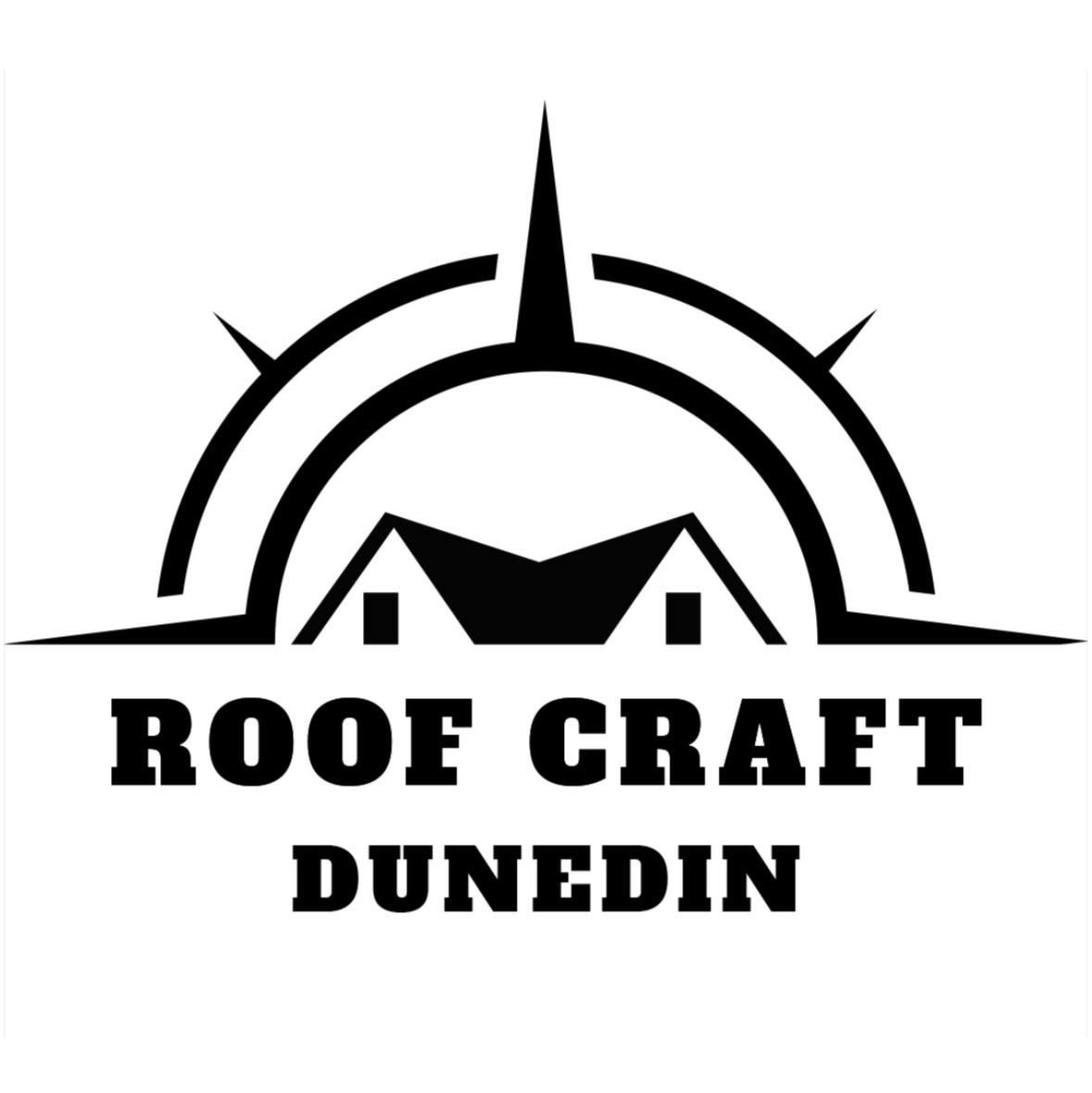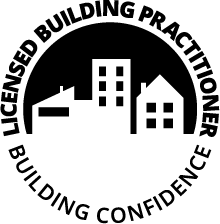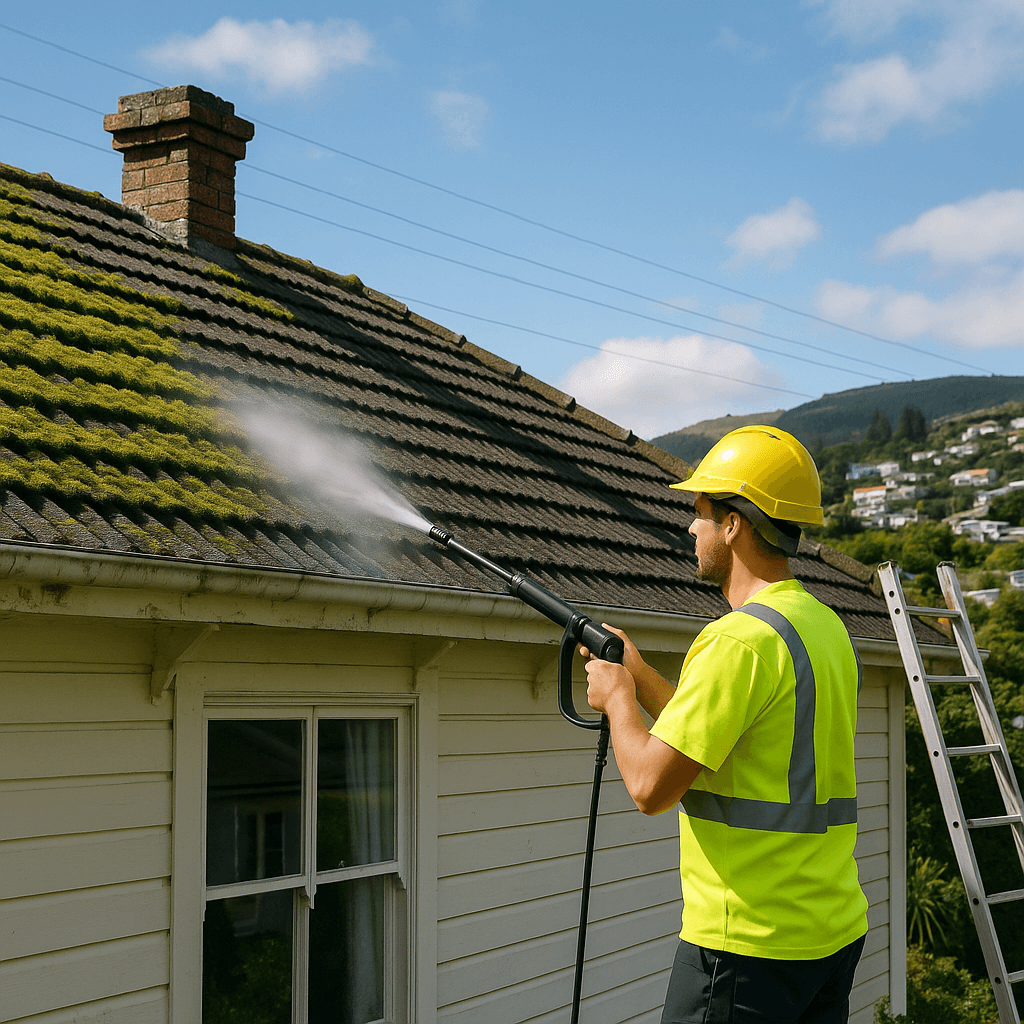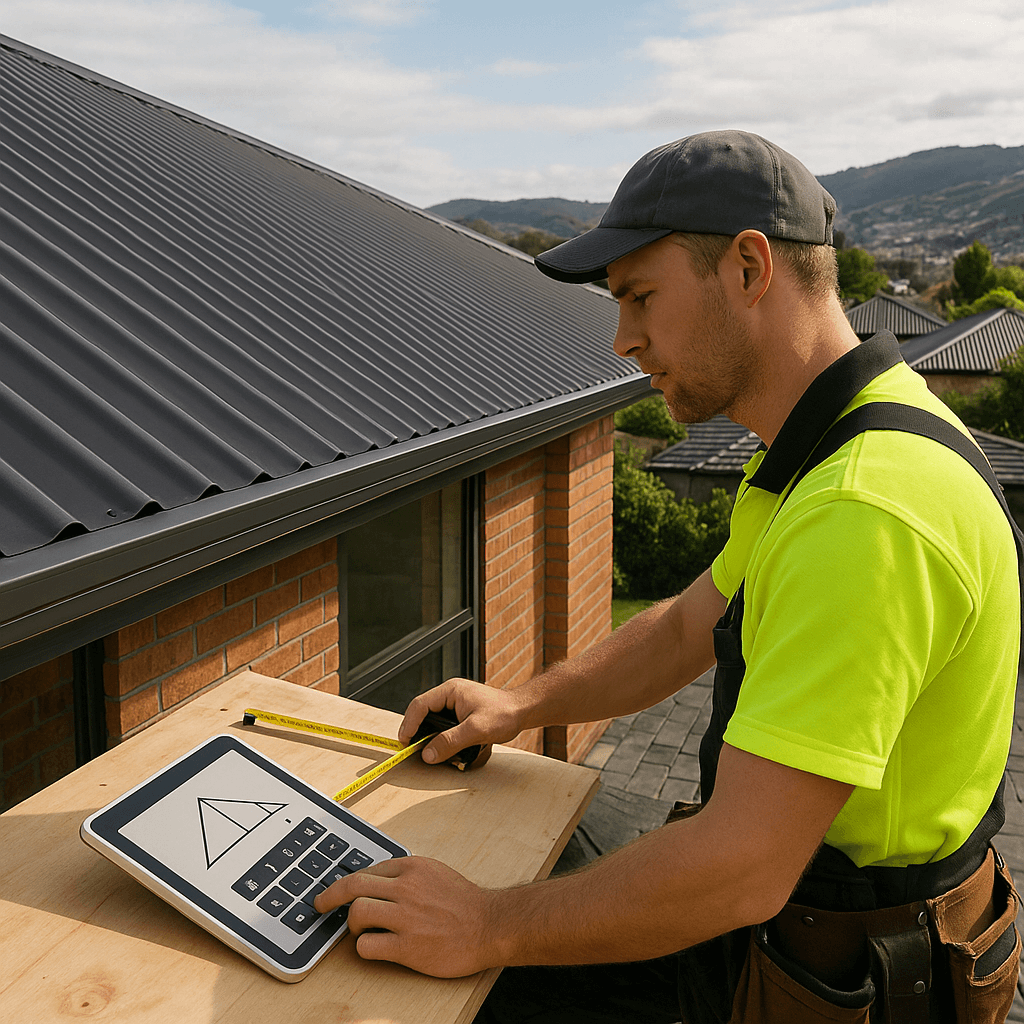Roof moss treatment involves a range of methods to safely and effectively remove moss from your roof, thus preventing damage and prolonging its lifespan.
- Frequently Asked Questions
- What causes moss to grow on roofs?
- Is roof moss harmful?
- How often should I clean my roof?
- Can I remove roof moss myself, or do I need a professional?
- What methods are best for removing roof moss?
- How can I prevent moss from growing back?
- Will removing moss damage my roof?
- How does Dunedin’s climate affect roof moss treatment?
In the charming city of Dunedin, homes often embrace the classic architecture of age-old structures, many of which are graced with the beautiful yet problematic presence of moss. If you’re a homeowner here, or anywhere where moss finds a foothold, understanding roof moss treatment becomes essential. This knowledge not only safeguards your roof from potential damage but also enhances the overall aesthetic and longevity of your property.
Why Remove Moss?
Moss thrives in damp and shaded areas, particularly on older roofs with a rough surface. While it may seem harmless at first, moss can trap moisture, leading to the deterioration of shingles and other roofing materials. This can result in leaks and structural damage over time. It’s crucial to understand that treating moss promptly can save you from costly repairs in the future.
Methods for Moss Removal
Effective roof moss treatment involves both preventive measures and active removal techniques. Prevention can include installing zinc strips at the roof’s peak or trimming overhanging branches to reduce shade. For active treatment, specialised cleaning solutions designed to kill moss, followed by gentle washing or manual removal with a soft-bristled brush, can be highly effective. Whether you’re tackling the job yourself or enlisting professional help, such as Roof Craft Dunedin, the approach should always prioritize the health and integrity of your roofing structure.
Choosing the right treatment method not only helps maintain the architectural charm of your home but also ensures the preservation of your roof’s functionality. Stay informed about local practices and seek expert advice when needed to ensure your home remains protected against the persistent growth of moss.

Identifying Moss Types and Growth Patterns
Understanding the various types of moss and their growth patterns is crucial for anyone seeking to implement effective roof moss treatment. The damp and temperate climate of Dunedin creates the perfect conditions for moss proliferation on roofing. Recognising the specific species invading your roof can guide you in choosing the most effective treatment options.
Common Roof Moss Species
In many temperate climates, particularly Dunedin, one of the most common types of moss you might encounter on roofs is Bryum capillare. This moss forms compact tufts and is known for its resistance to harsh weather conditions, making it a persistent problem on roofs. Another prevalent species, Dicranoweisia cirrata, has a stubbly appearance and tends to flourish in shaded, open areas where moisture is retained.
The appearance of these species can vary, often starting as a thin, green film on damp surfaces before burgeoning into thicker colonies. Identifying these mosses is the first step in combating them effectively, ensuring any roof moss treatment applied is appropriately targeted.
Factors Contributing to Moss Growth
Several environmental factors contribute to moss growth on roofs, particularly on older or historical houses. Firstly, moss thrives in damp conditions; therefore, any areas of your roof that retain moisture or experience inadequate sunlight exposure are at greater risk. Old, porous roofing materials common in historic homes can exacerbate this moisture retention, creating an ideal habitat for moss to thrive.
Moreover, local vegetation can impact moss growth. Overhanging branches or nearby trees can shade sections of the roof, preventing sunlight from drying out accumulated moisture and thereby fostering a conducive environment for moss to develop. Regular trimming and pruning can be effective immediate steps in reducing moss presence before engaging in chemical treatments.
Moss Growth Patterns on Roofs
Moss can grow in various patterns across roof surfaces, often beginning in crevices or shaded sections where water accumulates. Over time, it can spread if left unchecked, potentially compromising the structural integrity of the roofing materials. In historic areas like Dunedin, where architectural preservation is important, understanding these patterns in moss growth is indispensable.
By identifying areas prone to moss colonisation, homeowners can better plan their maintenance and treatment approaches. Regular inspections, particularly after seasonal changes, allow homeowners to catch early signs of moss growth and address them promptly with the appropriate roof moss treatment, ensuring the longevity and preservation of older buildings.
Significance of Proactive Moss Management
Proactive management is vital in controlling moss before it causes significant roof damage. Implementing regular inspections, understanding growth cycles, and acting upon early signs of moss are key strategies. For historic houses, maintaining the aesthetic and structural integrity is essential, which can be achieved by employing suitable and timely treatments.
Education about moss types and growth patterns serves as a foundational step to safeguard your home against this persistent problem. With a good understanding of the moss on your roof, you can choose the most effective treatments, prolonging the life and aesthetic of your roofing.
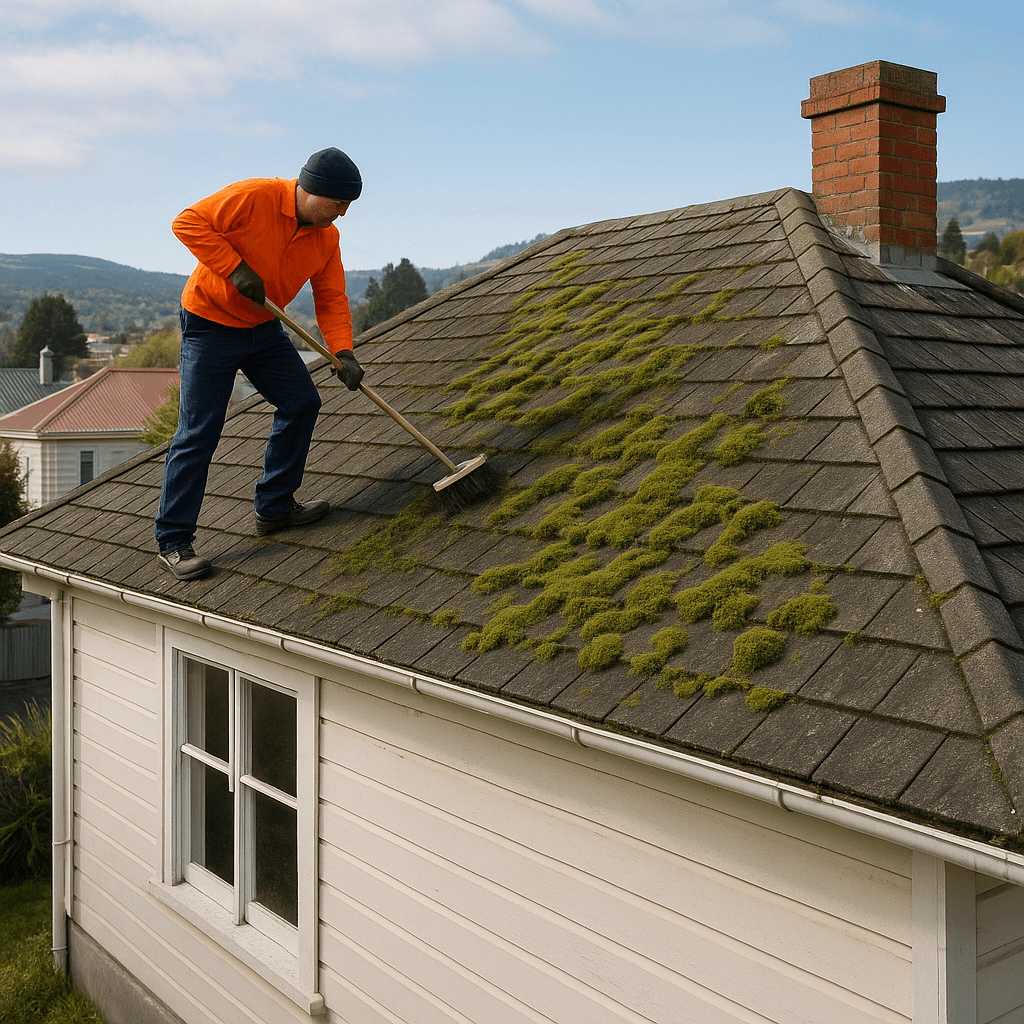
Effective Techniques for Removing Roof Moss
Removing roof moss from older homes, especially in historical locations like Dunedin, presents unique challenges due to the delicate nature of aged roofing materials. Employing the right techniques ensures the longevity of your roof and safeguards the unique architectural integrity of these homes.
Manual Removal Methods
One of the most effective ways to address roof moss without damaging roofing materials is through manual removal. This approach is especially recommended for roofs constructed from older tiles susceptible to breakage. Using a soft-bristle brush and working downward, gently remove the moss, being careful not to scrub too hard to avoid tile abrasion. Always prioritize safety, using appropriate gear such as sturdy ladders and harnesses to prevent falls.
In this method, it is also beneficial to keep the roof surface damp before starting the removal process. This helps in loosening the moss grip. However, it is crucial to avoid high-pressure washing, as it can erode the roof’s surface and cause leaks.
Chemical Treatments
Chemical treatments can be highly effective as a roof moss treatment, especially when dealing with severe moss infestations. These treatments include moss-killing products specifically designed for roofing materials. When selecting a chemical product, consider eco-friendly options that minimize environmental impact. Apply the solution as per the manufacturer’s instructions, usually with a garden sprayer, to achieve uniform coverage.
After application, allow the chemical to work for a prescribed period—often a few days—before reassessment. The benefit of this approach is that it not only kills existing moss but also helps in preventing future growth.
Preventative Measures
Once the moss is removed, preventing its return is key to maintaining your roof. Regular inspections and maintenance are crucial. Trim overhanging tree limbs to ensure that the roof receives adequate sunlight, as shade encourages moss growth. Gutters should be maintained regularly to prevent water accumulation, a common factor that promotes moss growth.
Another preventative measure involves installing zinc or copper strips along the roof ridge. As rainwater flows over these metals, ions are released, which inhibit moss growth.
Implementing these preventative measures can substantially delay the return of moss, preserving both the appearance and functionality of your roof.
Considerations and Tips
When dealing with older homes, always consider the structural integrity of the building before planning any moss removal. Be aware of local regulations, as some treatment methods may not be permissible if the building is heritage-listed. It’s often beneficial to engage professionals, especially if the roof has complex configurations or is particularly worn.
Ultimately, the choice of treatment method should align with personal preferences regarding environmental impact and maintenance requirements.
Now that you have a comprehensive overview of practical moss removal techniques, the next step is choosing the right service provider for implementing these methods.
Why Choose Roof Craft Dunedin for Roof Moss Treatment
Choosing the right service for roof moss treatment can make all the difference in maintaining the integrity and aesthetics of your home. Roof Craft Dunedin stands as a beacon of excellence in this field, offering unparalleled services tailored to the unique demands of Dunedin’s architectural landscape. Our commitment to quality, coupled with our in-depth understanding of local roof structures, distinguishes us as the frontrunner in the industry.
Experienced Local Experts
Our team at Roof Craft Dunedin comprises highly skilled professionals who bring years of experience and local expertise to every project. Being based in Dunedin, New Zealand, we have a profound understanding of the specific challenges posed by the local climate and historical homes. This expertise ensures that we approach each roof with consideration for its unique needs and preservation requirements, providing a service that not only removes roof moss effectively but also respects the architectural heritage of your property.
Furthermore, our familiarity with local weather patterns and building regulations positions us to deliver solutions that are both compliant and optimally effective. By choosing Roof Craft Dunedin, you’re gaining access to an insider’s perspective that optimises roof care strategies for durable and aesthetically pleasing results.
What Sets Us Apart
Roof Craft Dunedin differentiates itself through a combination of cutting-edge techniques and customer-focused service. We utilise the latest technology in moss treatment, ensuring that each solution is safe, environmentally conscious, and designed to preserve the longevity of your roof. Our approach incorporates sustainable practices that not only target immediate moss issues but also prevent future growth, encompassing a holistic solution to roof maintenance.
Reliability and professionalism are cornerstones of our service delivery. We pride ourselves on our punctuality, transparency, and dedication to customer satisfaction. Our team consistently delivers exceptional outcomes, backed by countless positive testimonials from our satisfied clients. This track record of success propels us to further elevate our offerings and ensure that every job we undertake stands as a testament to our commitment to excellence.
Frequently Asked Questions
What causes moss to grow on roofs?
Moss typically grows on roofs that are shaded and moist. This environment is conducive to moss spore germination, which begins the process of moss formation. Factors such as overhanging trees, north-facing exposures in the Southern Hemisphere, and poor drainage can all contribute to moss growth on your roof.
Is roof moss harmful?
While moss itself is not directly harmful, it can lead to significant damage over time. Moss retains moisture, which can deteriorate roofing materials, cause leaks, or lead to structural damage. Hence, it is crucial to address moss growth promptly.
How often should I clean my roof?
It is generally advisable to inspect and clean your roof at least annually. However, if your roof is prone to moss due to climatic conditions or environmental factors like heavy shade, more frequent cleaning may be needed.
Can I remove roof moss myself, or do I need a professional?
While it is possible to remove moss yourself using manual methods or DIY solutions, hiring a professional like Roof Craft Dunedin ensures that the job is done safely and effectively, minimising risk to both your roof and yourself.
What methods are best for removing roof moss?
Effective methods include manual scraping, chemical treatments, and the use of environmentally-friendly solutions. Each method has its benefits and choosing the right one depends on your roof type and level of moss infestation.
How can I prevent moss from growing back?
To prevent moss regrowth, ensure your roof has adequate sunlight exposure and remove debris regularly. Consider installing copper or zinc strips that retard moss development, and regularly prune overhanging branches.
Will removing moss damage my roof?
If done incorrectly, moss removal can damage roof shingles or tiles. However, professional services like Roof Craft Dunedin use techniques that minimise such risks, ensuring the integrity of your roofing.
How does Dunedin’s climate affect roof moss treatment?
Dunedin’s relatively cool and moist climate can exacerbate moss growth, necessitating regular inspections and targeted treatments to preserve roof longevity.
